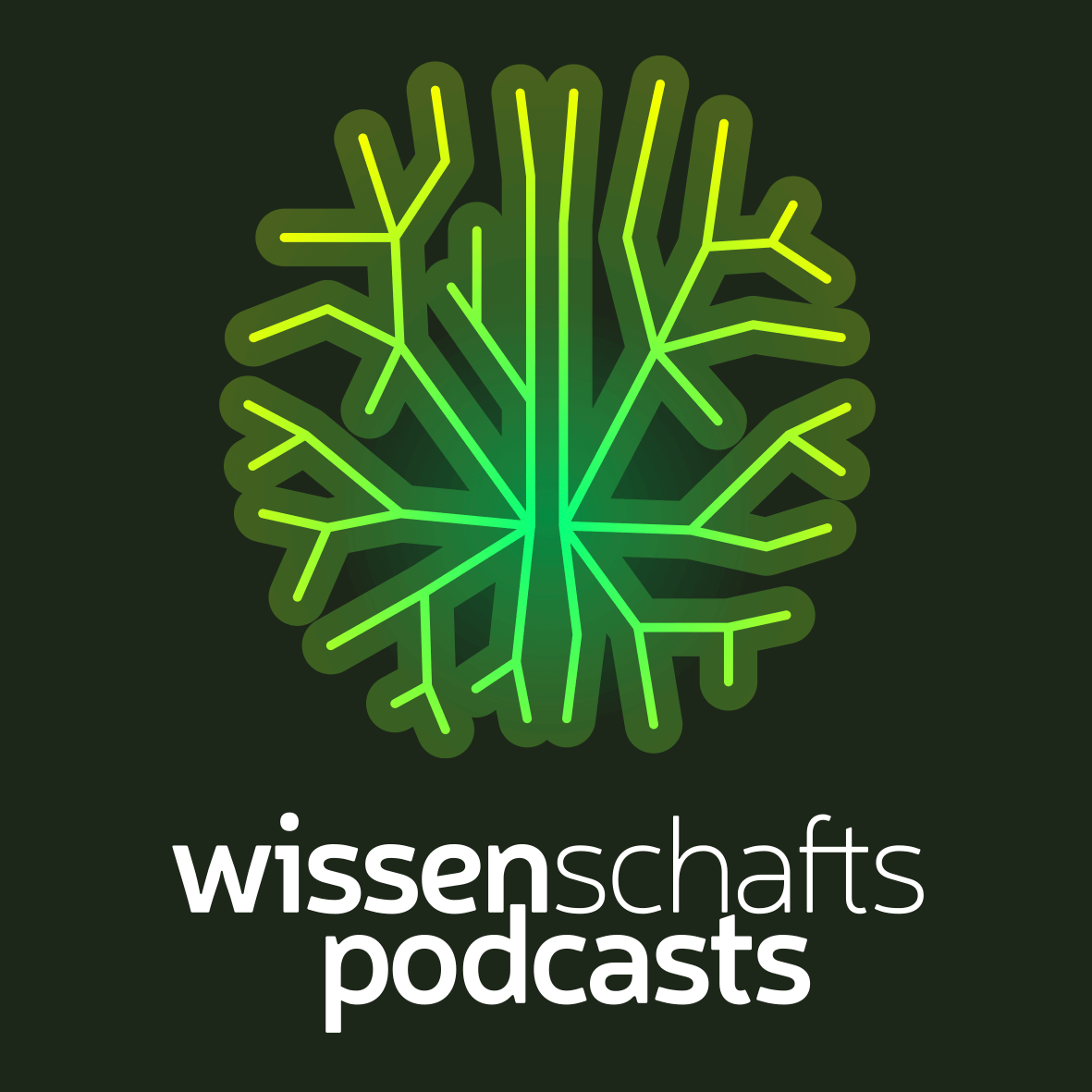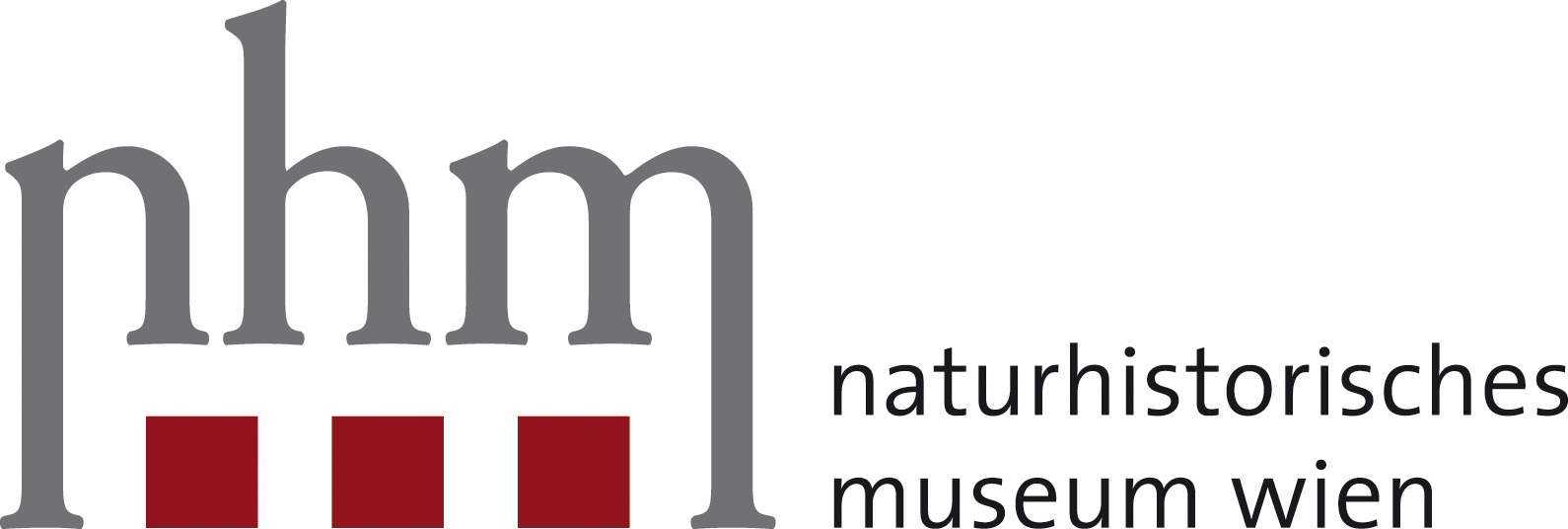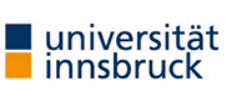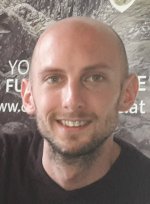
Florian Heigl
Memories and Imaginaries
Democratic Citizenship
"Memories and Imaginaries" critically explores with students in Austria what it means to be a citizen. Who can or is allowed to actively participate in the political community? Who can or is not allowed to? We address these questions with the aim of finding collective strategies to confront the state of exclusion and marginalization.
The aim of the research is for researchers to explore the importance of remembering, retelling and re-imagining the past and the future plays in living and participating in a political community.
In every community there are different stories of belonging and exclusion. The particular focus will be on migrant, queer and Jewish memories and imaginaries. In their own ways, they all represent stories of exclusion from Austrian society.
We explore how democratic citizenship works by practicing it on a small scale: Students, artists and researchers come together to learn, share and listen about migrant, queer and Jewish memories and ideas. The Citizen Scientists themselves may also bring and share their own experiences of exclusion.
The project sets new impulses in the field of Citizen Science, as it combines Citizen Science with art-based research. Memories and imaginaries are collective and relational forms of knowledge that are experiential, multi-layered in space and time. Citizen science and art-based research are innovative ways to gain insights into such imaginaries and their potential for democratic citizenship.
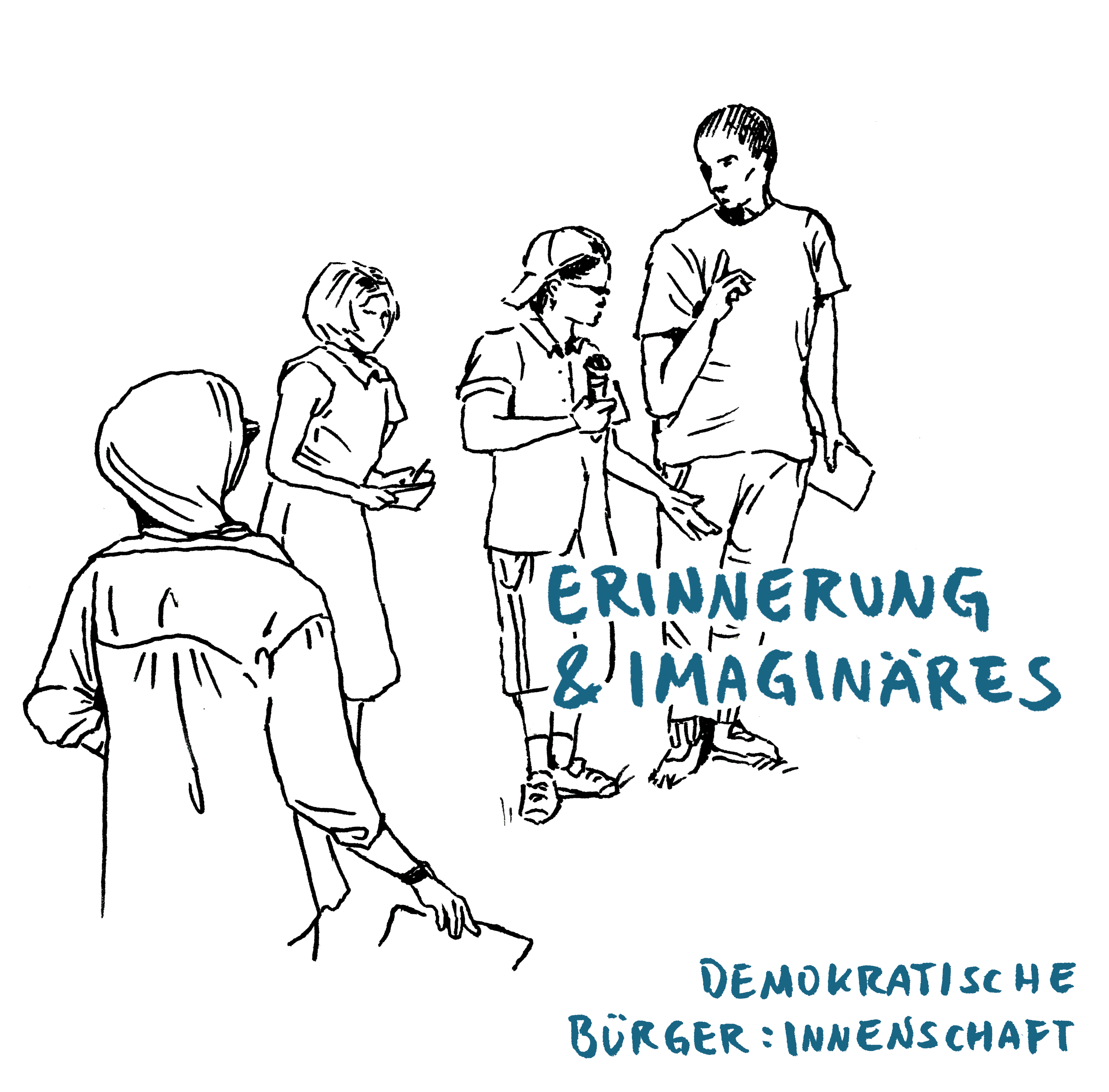
© Felix Deiters
How to participate?
During the co-research period from May to June 2022, a total of three "Remembrance Labs" (May) and one General Assembly (June) took place. The citizen scientists each took part in one of the three labs, which had the same content.
The interim results of all three labs, in the form of graphic recordings and stenographic minutes, were reflected on together in a joint general assembly at the end of June and the collected output was jointly verified.
The Labs artistically took us through the past and present of the three selected communities and enabled collective reflection on how we share situations of exclusion and how we can imagine them if we have not experienced them ourselves or if we do not remember them ourselves (for example because we are too young).
Eating together was as much a part of the collective experience as the mental and physical-affective participation in three group-dynamic, artistically guided exercises.
Artistic inputs were given in each memory lab, in which the Citizen Scientists were also invited to actively participate:
- Rap-poetry with Esra Özmen aka EsRap on the topic of migration,
- Building community by performative story-telling with artist Ndidi Iroh,
- Researching biographies: multi-marginalisations from a jewish perspective.
An expert was invited to each Remembrance Lab to present a short input for the discussion. They came from important civil society organisations:
- Dokumentationsarchiv des österreichischen Widerstandes (DÖW),
- Wiener Wiesenthal-Institut für Holocaust-Studien,
- PH Upper Austria.
The results of the research phase are currently being evaluated and will be published in the form of an artistic book in 2023.
What happens to the contributions of the Citizen Scientists?
The activities during the labs will be documented visually and textually by means of graphic recording (artist Felix Deiters) and a stenographic protocol.
The graphic and stenographic protocols will be included in the book publication "Memories and Imaginaries: Democratic Citizenship". The book will be produced in the last phase of the project (autumn 2022) and presented at a closing event in January 2023.
Contact and research team of the Academy of Fine Arts Vienna
Univ.-Prof. Dr. Marina Gržinić: This email address is being protected from spambots. You need JavaScript enabled to view it.
Dr. Sophie Uitz: This email address is being protected from spambots. You need JavaScript enabled to view it.
Dr. Jovita Pristovšek: This email address is being protected from spambots. You need JavaScript enabled to view it.
This project fulfilled version 1.1 of the quality criteria for citizen science projects on Österreich forscht.
Zeit.shift
Offers active beyond the duration of Zeit.shift
The Zeit.shift project ended in June 2023. The central web offerings continue to be active beyond the project duration. Specifically, the results can be followed via the website. The newly generated web portal is accessible worldwide and the text material provided (several million newspaper pages) is searchable and downloadable. Geodata and content tags can be assigned via an external platform and the online game Ötzit! is freely available. However, an evaluation of the generated data, as formulated in the project description, no longer takes place after the end of the project.
What is the Zeit.shift project about?
The aim of the Zeit.shift project is to establish a long-term, cross-border cooperation for the preservation, development and dissemination of the cultural text heritage of Tyrol and South Tyrol from the late 19th and early 20th centuries. Using historical newspapers as a prototype, the text collections are to be preserved in the long term and made accessible to the general public in a web portal. This offers the opportunity to learn more about one's own cultural heritage and to learn to appreciate historical texts as a source for exciting discoveries. An important focus of the project is the active involvement of the population. Interested citizens are invited to participate and can contribute to the text indexing by annotating the text material online. Together with citizens, relevant key terms and the correct location of the text excerpts will be added in order to improve the usability and searchability of the historical text material.
How can one participate?
Via the Historypin platform, interested citizens can participate in text indexing by describing the content of advertisements in historical daily newspapers and geolocating them via Google Maps in order to virtually reconstruct the shopping streets of 100 years ago. In this way, one can gain an insight into which products were traded and which events took place in yesterday’s world. One discovers professions and trades, some of which no longer exist, and has the opportunity to draw one's own comparisons of what can be found in the places mentioned today. This is only a small excerpt of the variety of topics offered by the advertisements in the press of that time - a voyage of discovery into the world of our ancestors. Participation is not tied to a specific time or place; all you need is internet access and a computer or smartphone. Tutorials will help with questions, and there is also the possibility of contacting the Zeit.shift project staff directly (This email address is being protected from spambots. You need JavaScript enabled to view it.). The citizen science activities are aimed at all citizens and no special knowledge is necessary to participate in the project.
Another citizen science approach in the Zeit.shift project was developed with the gamification application Ötzit!. The online game Ötzit! is about saving Ötzi from dangerous animals by correctly typing out falling words in Fraktur script. A game against time! Ötzit! is primarily aimed at German-speaking pupils aged 11-14, but is open to anyone interested. The aim of the game is to create an awareness of the digitised newspaper collections and to practise reading historical documents in Fraktur script. All data anonymously provided by the players (e.g. typed words) was analysed and used to explore automated OCR corrections via crowdsourcing and to improve the searchability of the digitised collections.
Why is it important and what happens to the data?
The benefit for the citizens is to experience the newspapers as a historical source and to learn something about their own cultural heritage through them. Together with the project team, they discover hidden archival treasures, thus making an invaluable contribution to indexing. In the project, the Zeit.shift portal for archiving, managing, researching and presenting digitised historical daily newspapers of the Tyrolean region was implemented. Using search filters, such as place and family names, time period, etc., the search results can be narrowed down precisely and the search term appears in the full text highlighted in colour. The data generated by the Citizen Science activities serve as support for the computer-linguistic analysis (e.g. correction of recognition errors in digitised texts in Fraktur script).
Photo gallery
-
 Unterinntaler Bote, 03.01.1908, S. 6 Unterinntaler Bote, 03.01.1908, S. 6
Unterinntaler Bote, 03.01.1908, S. 6 Unterinntaler Bote, 03.01.1908, S. 6 -
 Schwazer Lokal-Anzeiger, 16.04.1927, S. 4 Schwazer Lokal-Anzeiger, 16.04.1927, S. 4
Schwazer Lokal-Anzeiger, 16.04.1927, S. 4 Schwazer Lokal-Anzeiger, 16.04.1927, S. 4 -
 Unterinntaler Bote, 03.01.1908, S. 6 Unterinntaler Bote, 03.01.1908, S. 6
Unterinntaler Bote, 03.01.1908, S. 6 Unterinntaler Bote, 03.01.1908, S. 6 -
 Reuttener Nachrichten, 04.07.1930, S. 3 Reuttener Nachrichten, 04.07.1930, S. 3
Reuttener Nachrichten, 04.07.1930, S. 3 Reuttener Nachrichten, 04.07.1930, S. 3 -
 Unterinntaler Bote, 03.01.1908, S. 8 Unterinntaler Bote, 03.01.1908, S. 8
Unterinntaler Bote, 03.01.1908, S. 8 Unterinntaler Bote, 03.01.1908, S. 8 -
 Unterinntaler Bote, 03.01.1908, S. 10 Unterinntaler Bote, 03.01.1908, S. 10
Unterinntaler Bote, 03.01.1908, S. 10 Unterinntaler Bote, 03.01.1908, S. 10 -
 Unterinntaler Bote, 03.01.1908, S. 7 Unterinntaler Bote, 03.01.1908, S. 7
Unterinntaler Bote, 03.01.1908, S. 7 Unterinntaler Bote, 03.01.1908, S. 7 -
 Reuttener Nachrichten, 27.06.1930, S. 4 Reuttener Nachrichten, 27.06.1930, S. 4
Reuttener Nachrichten, 27.06.1930, S. 4 Reuttener Nachrichten, 27.06.1930, S. 4 -
 Schwazer Lokal-Anzeiger, 16.04.1927, S. 4 Schwazer Lokal-Anzeiger, 16.04.1927, S. 4
Schwazer Lokal-Anzeiger, 16.04.1927, S. 4 Schwazer Lokal-Anzeiger, 16.04.1927, S. 4 -
 Reuttener Nachrichten, 01.02.1929, S. 4 Reuttener Nachrichten, 01.02.1929, S. 4
Reuttener Nachrichten, 01.02.1929, S. 4 Reuttener Nachrichten, 01.02.1929, S. 4
https://www.citizen-science.at/en/immerse/what-is-citizen-science/author/934-florianheigl?start=80#sigProId4ff201727f
Video

This project fulfilled version 1.1 of the quality criteria for citizen science projects on Österreich forscht.
Podcast
“Wissen macht Leute” - the Citizen Science Podcast by Österreich forscht
Since March 2022, Österreich forscht has been producing a monthly radio programme for Radio Orange that revolves around the topic of Citizen Science: "Wissen macht Leute" (knowledge makes people). Each episode brings listeners closer to the topic through interviews with scientists, citizen scientists or decision-makers. Projects coming from a broad range of scientific disciplines and their relation to our society are discussed – this way, we want to reflect the diversity of projects and activities in the field of Citizen Science in the German-speaking countries. Through personal stories, we explore the path of scientists and citizen scientists into research in order to make science more tangible.
With "Wissen macht Leute" we want to make the topic of Citizen Science better known and attract the listeners’ interest in it. We want to present the diversity of Citizen Science and invite interested citizens to participate in the scientific projects listed on our platform. "Wissen macht Leute" thus wants to build a bridge between science and society and encourage listeners to get involved in research processes.
The podcast is broadcast on Radio Orange every 3rd Monday of the month from 2 to 2:30 pm and can also be streamed afterwards at our Blog, the Cultural Broadcasting Archive, on Spotify or on Apple Podcasts. If you prefer to use another platform, you can also subscribe to our RSS feed.
We're also happy to announce that you can also listen zu "Wissen macht Leute" in other free radio stations in Austria:
- on Radio Proton (Vorarlberg) every 3rd or 4th Wednesday Mittwoch of the month from 12:30 to 1 p.m.,
- on Radio Freirad (Innsbruck/Tyrol) every 3rd Friday of the month from 4:06 to 4:37 p.m.,
- in the Radiofabrik (Salzburg) every 4th Tuesday of the month at 6:30 p.m.,
- on Radio B138 (Upper Austria) every 4th Monday of the month at 1:15 p.m.,
- on Radio Fro (Linz, Upper Austria) every even Monday from 5 to 5:30 p.m.,
- and on the Campus & City Radio St. Pölten 94.4 every 3rd Monday of the month from 5:30 to 6 p.m.
Episodes (in German)
- 1st episode: Forschen Sie mit!
- 2nd episode: Von Gottesanbeterin, Baumschläfer und Frühjahrsblühern
- 3rd episode: Die inatura Erlebnis Naturschau und Citize Science
- 4th episode: Heute kann es regnen, stürmen oder schneien (Wettermelden.at)
- 5th episode: Austrian Citizen Science Conference 2022 (report)
- 6th episode: Wanted: Die Asiatische Mörtelbiene (BeeRadar)
- 7th episode: Citizen Science in urban development (Werkstatt Neu Leopoldau)
- 8th episode: Citizen Science in conservation areas
- 9th episode: Was flattert denn hier? (Schmetterlinge Österreichs)
- 10th episode: Welche Vögel sind jetzt da? (Stunde der Wintervögel)
- 11th episode: Prähistorische Webtechniken und Citizen Science (weaving techniques)
- 12th episode: Tiere unter Rädern (project Roadkill)
- 13th episode: Citzen Scientists am Wort (birthday special)
- 14th episode: Ein Wochenende für die Artenvielfalt - die City Nature Challenge
- 15th episode: In Linz beginnt's (Austrian Citizen Science Conference 2023)
- 16th episode: Brandaktuell - die Fire-Database
- 17th episode: Geschichte schreiben - Briefe aus der Wienbibliothek
- 18th episode: Die Zukunft der Wissenschaft - über die Partizipationsinitiative "IdeenLauf"
- 19th episode: Die Pilze sind los! (Pilzfinder & Pilzdaten Austria)
- 20th episode: Moral im Alltag (Everyday Morality)
- 21st episode: Citizen Science in Europe
- 22nd episode: My Tune - Citizen Science in Music Therapy
- 23rd episode: Fossilfinder - Citizen Science in the Earth Sciences
- 24th episode: On the trail of amphibians and reptiles (AmphiBiom & Herpetofauna)
- 25th episode: HPV: Humane PapilloWAS?
- 26th episode: The Citizen Science Award 2024 - behind the scenes
- 27th episode: The Austrian/European Citizen Science Conference 2024
- 28th episode: Citizen Science at BOKU University
- 29th episode: Mosquito-Alert!
- 30th episode: The history of Citizen Science in Austria
- 31st episode: Following footsteps of the Plastic Pirates
- 32nd episode: Citizen Science at the international book fair Buch Wien 2024
- 33rd episode: Gaming 4 Science: Open Reassembly
- 34th episode: ABC of Dialects
"Wissen macht Leute" is also listed on Wissenschaftspodcasts, a platform for podcasts about science and knowledge.
Mammoth wasp
The mammoth wasp Megascolia maculate is the largest wasp species in Europe with a body length of up to 4.5 cm. In Austria, a few specimens of the mediterranean species were found in Vienna and Lower Austria at the end of the 19th century. Since then, there have been sporadic sightings in eastern Austria in recent years. Due to the current climatic warming it can be assumed that the species will spread further in Austria in the next years. In order to observe and document this, we need your help.
As the species is still very rare in Austria and the flight time is very short, it is almost impossible to find it by active search, let alone to get an overview of the current occurrences in Austria. However, if many people keep their eyes open and observe the activity in their surroundings, success is certain, because the wasp is hard to miss!
The wasps hatch in our latitudes in June and can be observed until about mid-July. The adults feed on nectar and visit preferably blue and reddish-blue flowers from various families, such as the genus Allium, Eryngium or thistles, when foraging; they have also been observed on the common silk plant. The males, which usually hatch a week earlier, fly in search of females at a height of 50 to 150cm. The females mate fairly soon after their appearance and then search for a suitable host for oviposition: grubs of rhinoceros beetles, stag beetles, or walkers are accepted. The larvae of the mammoth wasp grow throughout the summer and then overwinter as a pupa in a cocoon, from which an adult wasp hatches again in the following early summer.
Observations are mostly made while nectar-feeding on flowers. In Austria, the species has so far been observed on the common milkweed, hollyhock, lavender and leek. Since the beginning of the citizen science project, the red-fronted dagger wasp has already been documented at 12 sites in northeastern Austria. The westernmost sites so far are Mistelbach and Strasshof an der March.
Recognition of the mammoth wasp
Besides its considerable size of up to 4.5cm body length, the most striking features of the mainly black and bristly-haired wasp are the yellow, orange-red or red colored head with large mandibles and the yellow spots on the abdomen. The posterior part of the abdomen is covered with reddish bristles.
Attention! There is a risk of confusion with another, smaller species, which is commonly found in our area: The hairy flower wasp (Scolia hirta) has yellow spots on the abdomen as well, but a black colored head!

© Harald Schillhammer
Sighting reports
Sightings of the mammoth wasp with photo, date and exact location can be reported by email to This email address is being protected from spambots. You need JavaScript enabled to view it.. Furthermore, information on the plant species is also interesting if the wasp was observed visiting flowers.
The corresponding sighting data will be evaluated and published afterwards.
You will receive a confirmation or correction of your identification and if you wish, you will be mentioned by name in the article. The scientific publication will be sent to all who have contributed with their data.
Project goals
The aim of the project is to monitor the spread of the mammoth wasp Megascolia maculata in Austria using data submitted by Citizen Scientists. As in several other species, changes in the distribution are related to the climatic warming. If sufficient data are acquired, the diving factors in this process will also be scientifically analyzed.
In addition, the project aims to increase awareness of the native insect fauna and its dynamics. Observing and recognizing the largest wasp in Europe can also be an impressing experience.
Gallery
-
 Mammoth wasp in Austria © Franz Wieland Mammoth wasp in Austria © Franz Wieland
Mammoth wasp in Austria © Franz Wieland Mammoth wasp in Austria © Franz Wieland -
 Mammoth wasp on Common silk plant in Austria © Günter Gaß Mammoth wasp on Common silk plant in Austria © Günter Gaß
Mammoth wasp on Common silk plant in Austria © Günter Gaß Mammoth wasp on Common silk plant in Austria © Günter Gaß -
 Mammoth wasp on redcurrant in Austria © Gerhard Barisch Mammoth wasp on redcurrant in Austria © Gerhard Barisch
Mammoth wasp on redcurrant in Austria © Gerhard Barisch Mammoth wasp on redcurrant in Austria © Gerhard Barisch -
 Mammoth wasp in Austria © Gerhard Barisch Mammoth wasp in Austria © Gerhard Barisch
Mammoth wasp in Austria © Gerhard Barisch Mammoth wasp in Austria © Gerhard Barisch
https://www.citizen-science.at/en/immerse/what-is-citizen-science/author/934-florianheigl?start=80#sigProId90fbf13b10
Project institution
This project fulfils version 1.1 of the quality criteria for citizen science projects on Österreich forscht.
Werkstatt Neu Leopoldau
The research project Werkstatt Neu Leopoldau is focused on the settlement process as a workshop situation for social innovations in housing and urban development, with the aim of fostering sustainable development and creating good neighbourhoods.
As an applied research project, "Werkstatt Neu Leopoldau" (Co-creation Neu Leopoldau) accompanies the settlement process of the IBA quarter in Vienna's 21st district. The phase of residents' and users' arrival in the neighbourhood is explored, which is conceived as a potential for social sustainability in Viennese housing. Using proven and new practices as a starting point, settlement processes are viewed as learning and education processes. Furthermore, it entails socially integrative potentials that should be shaped and further developed in a collaborative and co-creative setting to think about future ways of living in the neighbourhood.
In a first step, relevant topics and questions will be developed in a co-creative process based on the experiences of the actors involved. Special attention is paid to established and future social innovations in urban development (e.g. social innovations such as social support in the settlement process, community spaces, and sharing of further resources, etc.). In a synthesis step, a selection and focus on key topics are undertaken, which are then elaborated in more depth with the target groups in collaborative workshops. The aim of the innovation project is to develop transformational knowledge in a spatial context to enable and strengthen learning and educational processes at the individual and institutional level.
The project was carried out from November 2022 until September 2023, involving residents, tenants, property management companies, and experts who are accompanying the settlement process. Werkstatt Neu Leopoldau is supported by the IBA_Wien 2022 of the City of Vienna, MA 50, and a series of further cooperation partners.
Transdisciplinary research team
- future.lab Research Center TU Vienna: Christian Peer (project leader), Magdalena Augustin, Tamara Bauer, Ruth Höpler
- Citizen scientists: residents of Neu Leopoldau
- Practice partners: GB* district management Neu Leopoldau, property management and further experts, who professionally accompany the settlement process
Podcast episode
In September 2022, project leader Christian Peer was a guest on the Österreich forscht podcast "Wissen macht Leute" - if you're interested to learn more about the project, you can listen to the episode here (in German). In addition, Maria Schönswetter, a dedicated Citizen Scientist in the project, gave interesting insights into the project in March 2023 - tune in!
Results
You can download the final report directly from IBA_Vienna 2022 website or from the future.lab website!
Read more about the findings and results in our blog entry!
![]()
This project fulfilled version 1.1 of the quality criteria for citizen science projects on Österreich forscht.
Forest areas for the forest dormouse
Overview
You can tell by its name: The forest dormouse (Dryomys nitedula) is a characteristic species for deciduous and mixed forests. It belongs to the dormouse family and its survival is inextricably linked with forest habitats. The forest dormouse is protected throughout Europe, but data on its distribution is largely still missing. So where in Austria can it be found?
Have you ever seen a forest dormouse? With its black eye mask, it reminds us of a superhero in action, but in fact it spends a large part of the year in hibernation – a very typical behavior for a dormouse. Even during its activity period, it is a quite cryptic species that lives a hidden life between the branches of the trees. The forest dormouse is seldom seen, and it is not easy to prove its presence in an area. The forest dormouse is almost unknown even among foresters and regular forest guests.
Therefore, we are searching for the forest dormouse nationwide - beginning from the Danube floodplains, down to the mountains of the Alps. We want to find out more about this cryptic little climber and its habitat preferences and are counting on the help of numerous citizen scientists! There are many ways to take part in the “task force forest dormouse”. Become a citizen scientist and help us to find the forest dormouse!
Our project goals:
- Where does it live? – Improve the knowledge about the distribution of the forest dormouse in Austria.
- How can we preserve the habitats of the forest dormouse? – Develop a schedule of measures to protect the species.
What´s happening now:
- We installed 600 nesting boxes to monitor the forest dormouse populations.
- We use camera traps and footprint tunnels to detect our native dormice.
- We collect reports from citizen scientist.
- We provide information material and educational documents.
- We develop a protection concept and guidelines for forest managers.
- We share our knowledge at events.
Citizen Science Seminar
In 2022, poject coordinator Birgit Rotter held a lecture about "Forest areas for the forest dormouse" (in German) as part of the lecture series "Citizen Science Seminar" at the University of Natural Resources and Life Sciences Vienna (BOKU).
Image gallery
-
 Forest dormouse climbing in the branches (c) Lubomir Hlasek Forest dormouse climbing in the branches (c) Lubomir Hlasek
Forest dormouse climbing in the branches (c) Lubomir Hlasek Forest dormouse climbing in the branches (c) Lubomir Hlasek -
 Forest dormouse sitting on a branch (c) Lubomir Hlasek Forest dormouse sitting on a branch (c) Lubomir Hlasek
Forest dormouse sitting on a branch (c) Lubomir Hlasek Forest dormouse sitting on a branch (c) Lubomir Hlasek -
 Forest dormouse found in a nesting box (c) apodemus Forest dormouse found in a nesting box (c) apodemus
Forest dormouse found in a nesting box (c) apodemus Forest dormouse found in a nesting box (c) apodemus -
 Nesting box (c) Birgit Rotter Nesting box (c) Birgit Rotter
Nesting box (c) Birgit Rotter Nesting box (c) Birgit Rotter
https://www.citizen-science.at/en/immerse/what-is-citizen-science/author/934-florianheigl?start=80#sigProId338a66d27d
This project fulfils version 1.1 of the quality criteria for citizen science projects on Österreich forscht.
Explorer Challenge
The Austrian start-up Livin Farms develops innovative technologies for the sustainable breeding of insects. Food and other organic residues can be recycled with the help of insects and converted back into valuable proteins. In this way, cycles can be closed and food systems can be made more sustainable.
Explorer Challenge
Education is another central aspect at Livin Farms. As part of the Explorer Challenge school project Livin Farms brings sustainability, circular economy and insects to schools. The project is for public secondary schools in Vienna and runs in cooperation with the Vienna Business Agency. Participation in the project is free.
School classes receive up to 3 Hive Explorer (mini mealworm farms) per school for up to one semester. Participating school classes develop their own research questions on insects and insect breeding and implement experiments to find answers. The results are documented and presented.
Through the participation of the students as Citizen Scientists, new research questions are developed. Thereby new knowledge and new insights are generated and research on the subject of insects as an alternative source of protein is supported.
Other schools are also invited to participate. To receive a Hive Explorer, these schools can check the website www.thehiveexplorer.com or send an to email This email address is being protected from spambots. You need JavaScript enabled to view it..
Picture Gallery
-
 Hive Explorer in Vienna Open Lab 2 (c) Vienna Open Lab Hive Explorer in Vienna Open Lab 2 (c) Vienna Open Lab
Hive Explorer in Vienna Open Lab 2 (c) Vienna Open Lab Hive Explorer in Vienna Open Lab 2 (c) Vienna Open Lab -
 Hive Explorer in Vienna Open Lab (c) Vienna Open Lab Hive Explorer in Vienna Open Lab (c) Vienna Open Lab
Hive Explorer in Vienna Open Lab (c) Vienna Open Lab Hive Explorer in Vienna Open Lab (c) Vienna Open Lab -
 Hive Explorer in the NMS Konstanziagasse 2 (c) livin farms Hive Explorer in the NMS Konstanziagasse 2 (c) livin farms
Hive Explorer in the NMS Konstanziagasse 2 (c) livin farms Hive Explorer in the NMS Konstanziagasse 2 (c) livin farms -
 Hive Explorer in the NMS Konstanziagasse (c) livin farms Hive Explorer in the NMS Konstanziagasse (c) livin farms
Hive Explorer in the NMS Konstanziagasse (c) livin farms Hive Explorer in the NMS Konstanziagasse (c) livin farms -
 Hive Explorer in the OMS Pfeilgasse (c) livin farms Hive Explorer in the OMS Pfeilgasse (c) livin farms
Hive Explorer in the OMS Pfeilgasse (c) livin farms Hive Explorer in the OMS Pfeilgasse (c) livin farms
https://www.citizen-science.at/en/immerse/what-is-citizen-science/author/934-florianheigl?start=80#sigProIdd040d396ee
This project fulfilled version 1.1 of the quality criteria for citizen science projects on Österreich forscht.
Cats do science
1. Description
Take part in a Citizen Science Project, in which your cat will play the main role! According to current knowledge, any kind of damage or addiction to catnip can be ruled out – the administration of catnip to the cat is completely harmless. The experiment requires about 20 minutes a day for three days in a row (preparation time is included). At the end of the experiment, a total of 15 minutes of recordings should result.
2. General
Dear Citizen Scientists!
First of all, thanks to all of you who decided to participate in a Citizen Science Project. The favourite domestic animal of Austrians and Germans are cats. They can be encountered in about 16% of Austrian household, which makes up every 6th household with a feline. You must’ve already heard about how cats go crazy about catnip (Nepeta cataria) that has been named after them. Reports on their reactions to the herb vary a lot: some show little or no interest at all, whereas others enjoy every touch or even fall into a state of euphoria. Researchers all over the world are eager to know why cats in particular cannot resist the scent of catnip, and initial finding are emerging.
Important: There are no reports or indications about catnip being harmful to your cat.
Furthermore, there are still many unanswered questions. The questions that I’ve been asking myself are whether cats can develop a resistance to catnip and whether distinguishing features such as gender, genetics or age have any influence on the development of resistance. At a regular consumption of various intoxicants and stimulants, humans must take a higher dose of a substance to achieve the same effect, or in other words: the effect diminishes if the amount of a substance remains the same. Together with my master thesis and you participating, I want to examine this hypothesis and create findings. For this, please read through the following points.
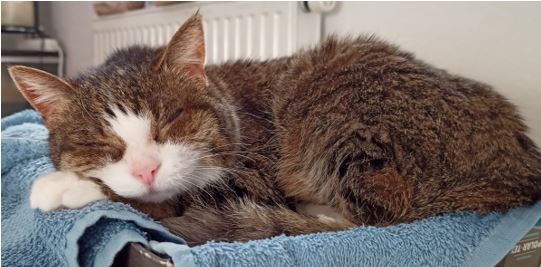
3. Preparation and instructions
- The experiment requires 20 minutes each of three consecutive days. The time for the experiment for the participant is free to be chosen, however, the continuation on the following days should be carried out roughly at the same time as on the first day (± 1 hour).
- The contents of the test kit
- information sheet
- questionnaire with an assignment code of six digits on the backside
- five sacks of catnip (about 9g each) (be careful when taking out the sacks – they are not sealed)
- a cotton bag
- One test kit is to be used for one cat. During the administration of catnip to the cat, the feline mustn’t have any contact to other cats.
Note that only three out of five sacks with catnip are needed. The other two are meant as a small token of attention to you and for personal use. Should your cat show no interest in the catnip, you could use the herb for tee as well.
4. Allocation of tasks
The tasks of the citizen scientist consist of preparing and recording the experiment, and filling out the questionnaire. For the preparation: according to instructions, stuff one sack of catnip into the cotton bag and lace it up. Administer the bag to the cat by either placing the bag in front of the feline or bringing the feline directly to the bag. Now, start recording by showing the administration code first, then the cat according to chapter 5 “Performing the experiment”.
Upload the videos to the upload link (to be found in the second e-mail) and fill out the questionnaire online. Every video and completed questionnaire will then be analysed to see whether changes of behaviour throughout the experiment appear and whether estimations on the cats’ behaviour can be made based on distinguishing features such as gender, genetics, age, etc. Besides, the hypothesis that none or barely interested cats can learn to react to catnip by the administration is to be examined as well.
5. Performing the experiment
In order to carry out the experiment, a smart device (e.g., smartphones, tablets, etc.) or a video camera are required for recording. Then, a total of 16 minutes is needed for the performing.
Step 1: Stuff one of the sacks with catnip into the cotton bag.
Step 2: Start recording. Briefly and discernibly, show the administration code on the backside of the questionnaire. Start a stopwatch or note the time when administrating the cotton bag to the cat (t0) and record the cat’s reaction for two minutes. Interact with the feline as little as possible after starting the experiment.
Step 3: Five minutes after the administration (t5), record the cat’s reaction for one minute.
Step 4: Ten minutes after the administration (t10), record the cat’s reaction for one minute.
Step 5: 15 minutes after the administration (t15), record the cat’s reaction for one minute.
- Find an instruction video on the homepage of the faculty of zoology (link located further below).
- The last page of this project description shows a pictorial instruction.
- A total of five minutes video material should result per day – 15 minutes for the entire experiment over three days.
- Should the cat lose interest, please note the precise time (tx) at which the cat shows no more response.
- Should the cat show no interest in the catnip at all, note that as well, as that counts as a result too. If no interest is shown, no recordings are needed.
- Change or clean the location after the first and second day of administration. That ensures best condition, without influences of the day before.
- During the 16 minutes of administration, do not give the cat any kind of treats or titbits, otherwise, feed the cat as usually.
- Find the administration code that is assigned to one cat only on the backside of the questionnaire.
- The first video of each day should include a brief recording of the code right at the beginning; the recording of the code should not be a separate video.
- The chronological order of the videos should evidently be named automatically by your smart device. Naturally, you can rename the videos as long as the date and time are made clear.
- In a second e-mail, find a link for the video uploads and a link for the digital questionnaire.
- The digital questionnaire corresponds to the questionnaire in the test kit that serves only for personal notetaking for the duration of the experiment. Should any problem arise when filling out the online questionnaire, please send us the completed questionnaire per e-mail.
- For further questions regarding the upload, experiment or any problems, feel free to contact me at This email address is being protected from spambots. You need JavaScript enabled to view it..
- The uploaded videos cannot be watched by other participants due to data protection!
6. Purpose of the experiment
The purpose of the experiment is to observe and examine how cats’ behaviour might change or diminish if they are exposed to catnip for three consecutive days. The more participants we have, the more significant are the results.
7. Contents of the test kit
The catnip used for this Citizen Science Project comes from barryz.de, based in Germany. To this grown in France catnip we attach great value – meaning, it is grown naturally and it contains no artificial colouring, preservatives and is completely GM-free (not genetically engineered). Besides, the catnip is fully vegan and gluten free. The five sacks with the catnip of the brand Cilia are made of pure paper fibres, the cotton bag of the brand SAKETOS consists of 100% cotton. The test kit does not contain anything that could harm you or your cat.
8. Related links
For more information on this project, please visit the project homepage of the faculty of zoology at the university of Innsbruck.
Otherwise, feel free to watch our YouTube video.
If you have any further questions, please do not hesitate to contact us: This email address is being protected from spambots. You need JavaScript enabled to view it.
I wish you and your cat a lot of fun with the experiments!
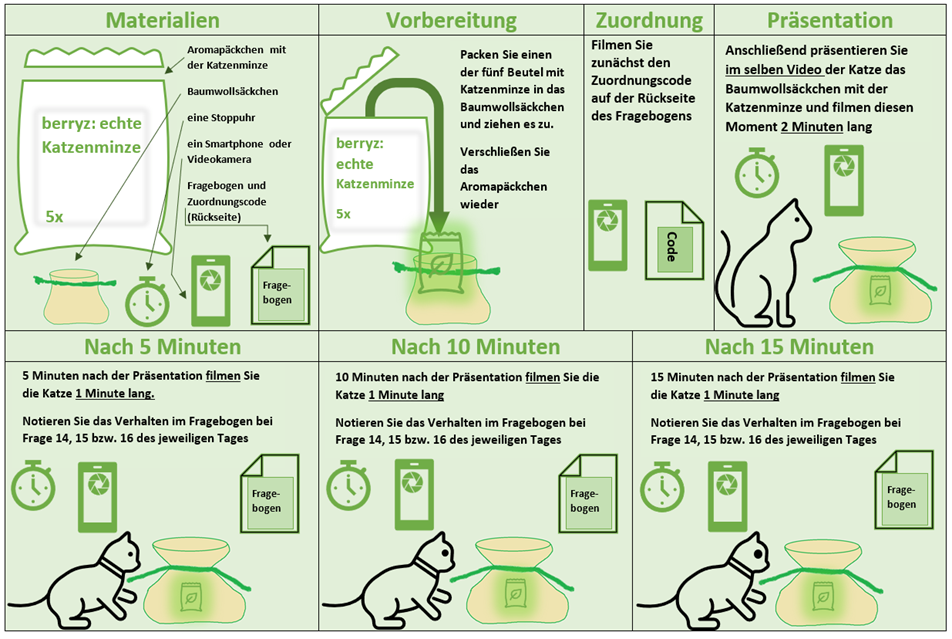
Picture Gallery
-
 Relaxation Relaxation
Relaxation Relaxation -
 Contact Contact
Contact Contact -
 Packing Packing
Packing Packing -
 Smell Smell
Smell Smell -
 Working process aroma bags Working process aroma bags
Working process aroma bags Working process aroma bags -
 Working process teabags Working process teabags
Working process teabags Working process teabags -
 aroma bags aroma bags
aroma bags aroma bags -
 Catnip Catnip
Catnip Catnip
https://www.citizen-science.at/en/immerse/what-is-citizen-science/author/934-florianheigl?start=80#sigProId6b6bde7bd2
This project fulfilled version 1.1 of the quality criteria for citizen science projects on Österreich forscht.
PATIO - Patient Involvement in Oncology
Be an expert on your disease and join our research!
The PATIO initiative is working hard to strengthen the voices of prostate cancer patients and their caregivers heard in medical research.
Why is it important to act now?
Porstate cancer affects a considerable number of people in Austria. On the one hand, around 65,000 men have suffered from this particular type of cancer by the end of 2020 (Statistics Austria, 2022), and on the other hand, there are countless partners, children, grandchildren and close friends who stand by the side of those directly affected by the disease. Over time, caregivers acquire more and more knowledge about prostate cancer and thus become valuable mediators of the everyday life with the disease and the corresponding research.
Our aim is to make everyday life with prostate cancer easier for those affected by the disease with the help of a digital communication tool.
Being disgnosed with "cancer" is a dramatic experience and prostate cancer is likely to be a challenging disease both during and after treatment. In addition to the physical effects, the disease can also affect your personal relationships, hobbies, work life and financial situation. It is your individual strategies for coping with the side effects of cancer that can be extremely valuable not only to other people affected by cancer, but also to research!
This is where the PATIO initiative comes in. Since 2020, we have been working closely with a total of nine patients and one patient's relative to improve the overall quality of life. We want to learn from their personal stories and experiences. Together, we want to find ways to improve everyday life with prostate cancer for everyone involved.
“PATIOSpots” as a result of direct public participation and engagement
The “PATIOSpots” health guide app was developed in a co-design and co-creation process with people affected. It allows users to find various relevant contact points on a worldwide map or to enter them themselves in a participatory way. Points of contact can be, for example, toilets, treatment centres, support groups, medical supply shops, etc. Other features can also be added to the locations (opening hours, cleanliness, facilities, etc.). The app is also directly linked to our website www.patiospots.com. Articles on current scientific issues and everyday life with prostate cancer are also regularly published here. Our "PATIO Lounge" forum is another networking platform where people can exchange views on various topics.
PATIO's vision is to provide the best possible information on treatment options and advice on how to manage the symptoms of the disease, but also to provide a communication platform for internal exchange and an interface between doctors and patients.
The initiative
The PATIO initiative is a collaborative research project that brings together scientific knowledge from different disciplines and the practical expertise of prostate cancer patients in Austria. The project is being carried out at the Medical University of Vienna in collaboration with scientists from academia as well as with the official support group for prostate cancer in Austria. Nine patients and one relative contribute their knowledge and life experience to the extended team. The project was funded by the Open Innovation in Science Center of the Ludwig Boltzmann Society.
Stay up to date
You just found out about “PATIO” by this posting and would like to stay informed about the next steps we are taking altogether at “PATIO”? We heartly invite you to sign up for our newsletter and to follow us on TikTok, Facebook and Instagram.
Gallery
-
 1. Round table 1. Round table
1. Round table 1. Round table -
 1. Round table 1. Round table
1. Round table 1. Round table -
 1. Round table 1. Round table
1. Round table 1. Round table -
 1. Round table 1. Round table
1. Round table 1. Round table -
 We keep the patient experience high! We keep the patient experience high!
We keep the patient experience high! We keep the patient experience high! -
 Round table - we are complete Round table - we are complete
Round table - we are complete Round table - we are complete -
 Round table Round table
Round table Round table -

-

https://www.citizen-science.at/en/immerse/what-is-citizen-science/author/934-florianheigl?start=80#sigProId7f230eb5a6
This project fulfils version 1.1 of the quality criteria for citizen science projects on Österreich forscht.
Hungarian Bumblebee
The "Österreichische Vogelwarte" reports that the Hungarian Bumblebee (Bombus haematurus) has now been sighted in Lower Austria: https://www.citizen-science.at/blog/ungarische-hummel-in-niederoesterreich-gesichtet





